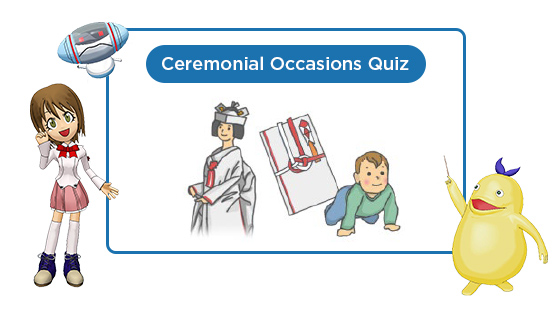Lesson 25Conveying What You Feel - Parting -
Let's see
Wedding Ceremony
View movie
Explanation through photos
Click (tap) to enlarge and show explanation.
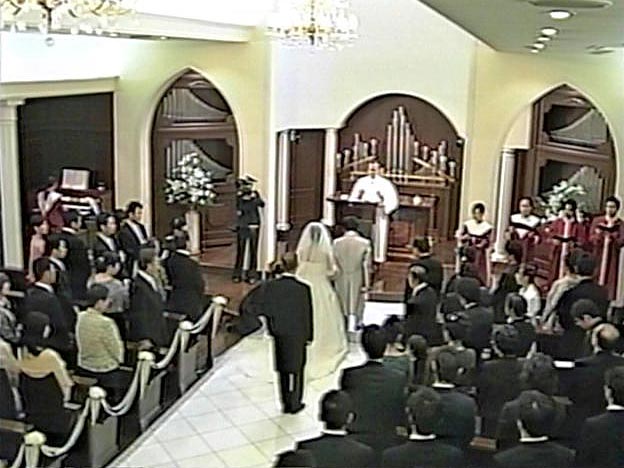 Western-style wedding ceremony 1
Western-style wedding ceremony 1
In Japan, religion does not play a role in a couple's decision on which style of wedding ceremony to choose. This is a wedding ceremony held in a church. Those who are not Christian often hold ceremonies in churches. Currently, nearly 70 percent of wedding ceremonies are Western style. Western-style wedding ceremony 2
Western-style wedding ceremony 2
The groom wears a tuxedo and the bride wears a wedding dress. They exchange wedding vows in front of the priest in the church. Temple wedding ceremony 1
Temple wedding ceremony 1
This is a temple wedding ceremony called butuzen-shiki. Nowadays, less than one percent of wedding couples choose this style.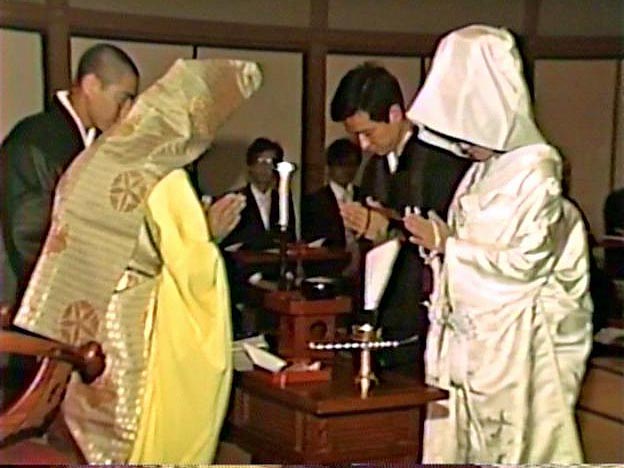 Temple wedding ceremony 2
Temple wedding ceremony 2
The bride and groom have juzu rosaries in their hands. Juzu are given to the couple in temple wedding ceremonies.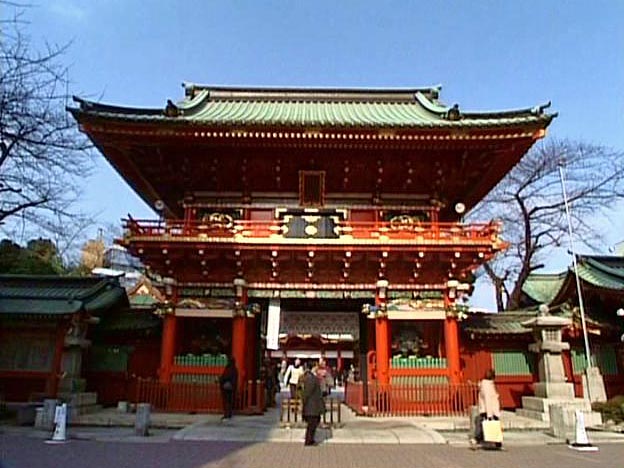 Shrine
Shrine
This is a shrine wedding ceremony called shinzen-shiki.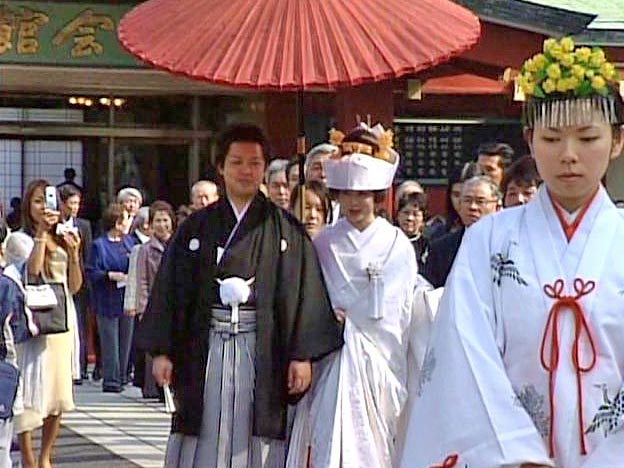 Shrine wedding ceremony
Shrine wedding ceremony
A kan-nushi Shinto priest and miko female Shinto ritual assistant walk ahead followed by the bride and groom, and then by their families. The groom wears a Japanese kimono called montsuki hakama. The bride wears a white Japanese kimono called shiromuku and tsuno-kakushi headwear.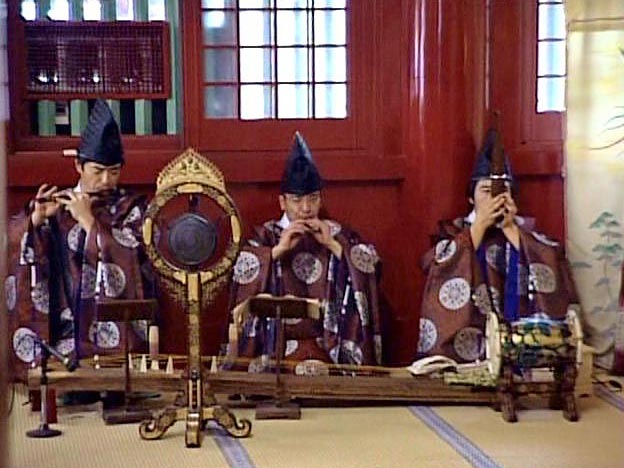 Gagaku
Gagaku
Gagaku is classical Japanese court music. They play musical instruments called sho, hichiriki, and ryuteki. These three together are called sankan. Miko-mai
Miko-mai
They celebrate the couple's wedding with song and dance. The miko performs a dance called miko-mai.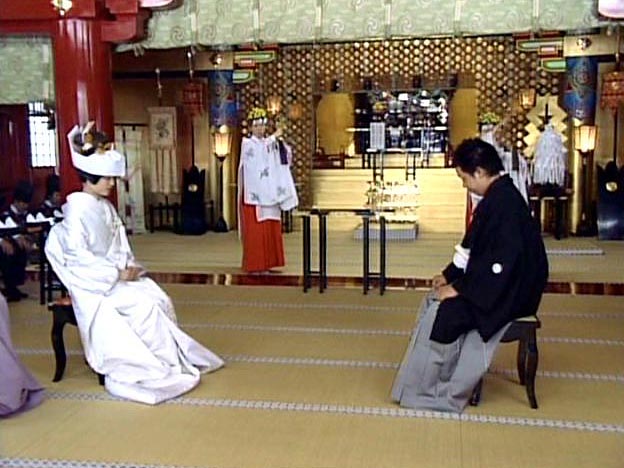 Osuzu no gi 1
Osuzu no gi 1
She rings the bell to pray to the Shinto gods for protection of the couple. This is called osuzu no gi or suzu-furi shinji [bell-ringing ritual].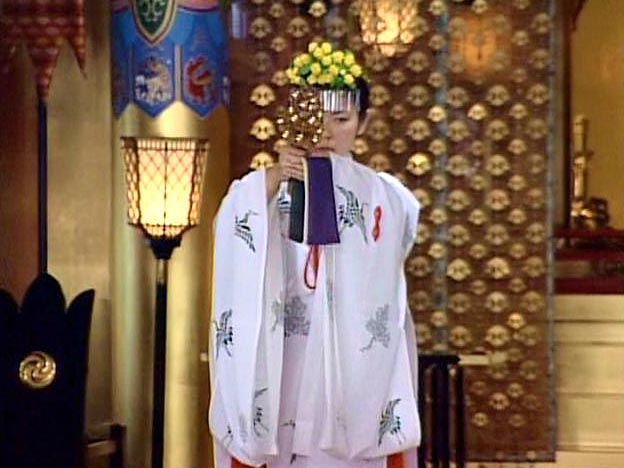 Osuzu no gi 2
Osuzu no gi 2
A miko is ringing the bell. Miko are single women in their teens or twenties.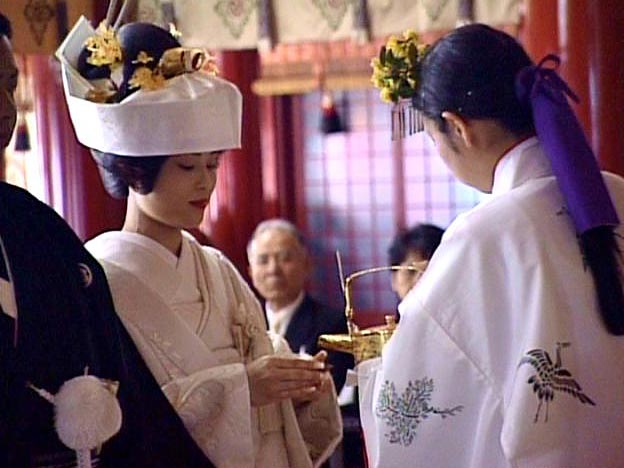 Seihai no gi 1
Seihai no gi 1
In the shinzen-shiki wedding ceremony, the bride and groom drink sake in a ritual called san-san-kudo. Then they make their wedding vows.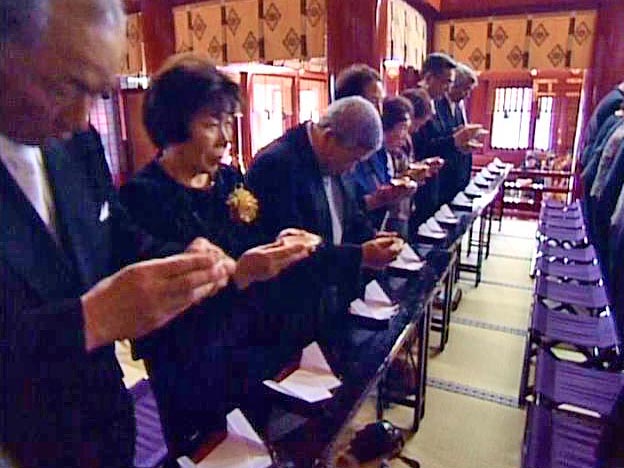 Seihai no gi 2
Seihai no gi 2
The couple's families also drink sake together.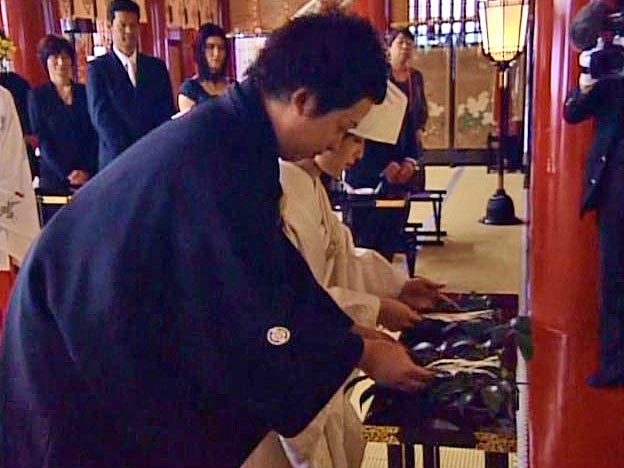 Tamagushi hoten
Tamagushi hoten
After the bride and groom say their wedding vows, they offer tamagushi to the gods and pray. Tamagushi is an offering made of a sakaki tree branch decorated with strips of washi paper.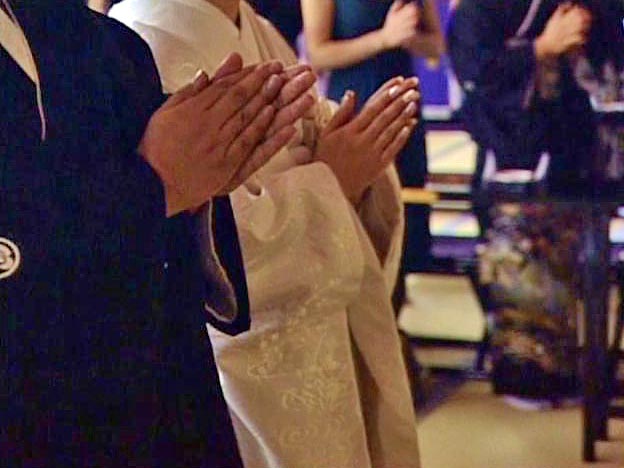 Nirei nihakushu ichirei
Nirei nihakushu ichirei
They bow twice, clap their hands twice, and then bow one more time in front of the gods. This is how you pray in a shrine. When you clap your hands, make sure that they are in front of your chest.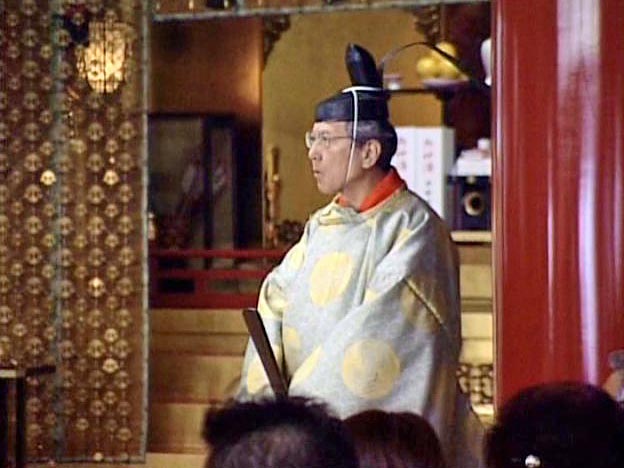 Kan-nushi priest
Kan-nushi priest
The kan-nushi priest makes a greeting, saying, I would like to express my heartfelt wishes for the happiness of you both. And, I would like to congratulate you on your happy wedding.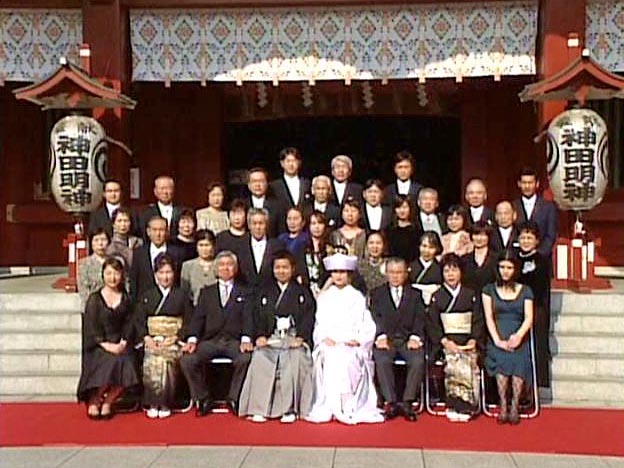 Commemorative photo
Commemorative photo
After the wedding ceremony, they take a commemorative photo with their families and relatives.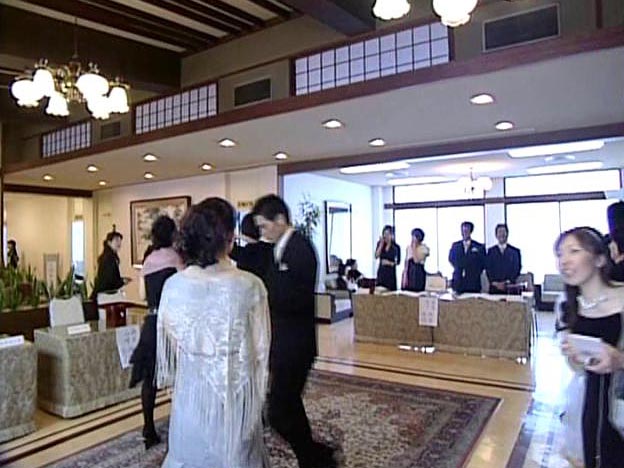 Hirouen reception 1
Hirouen reception 1
Following the wedding ceremony, they hold a reception called hirouen at a hotel or a restaurant. Those invited to the party bring a cash gift called goshugi in a special envelope, or goshugi-bukuro. You hand it to the receptionist and write your name. The average amount of goshugi is about 30,000 yen.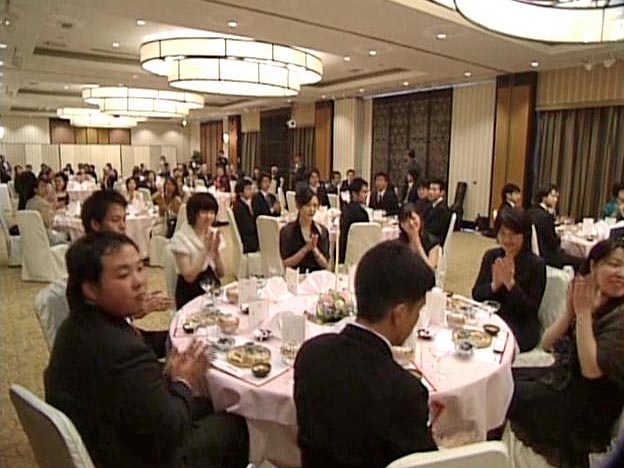 Hirouen reception 2
Hirouen reception 2
The bride and groom invite their friends and co-workers to the hirouen party. Usually, they invite more people to the reception than to the wedding ceremony.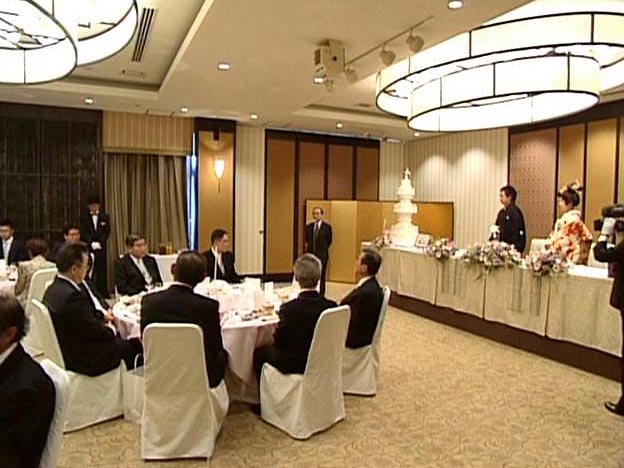 Speech
Speech
There is a congratulatory speech. A senior manager of one of the couple's companies often gives this speech.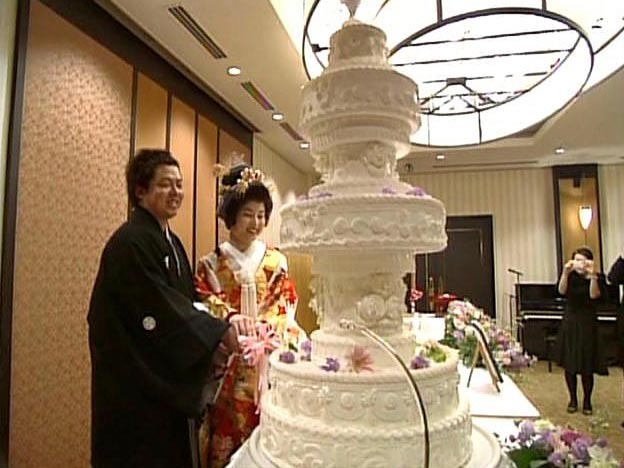 Wedding cake 1
Wedding cake 1
The couple cuts a big cake together. This is one of the main events of the party and is said to be the first job after marriage that they work on together.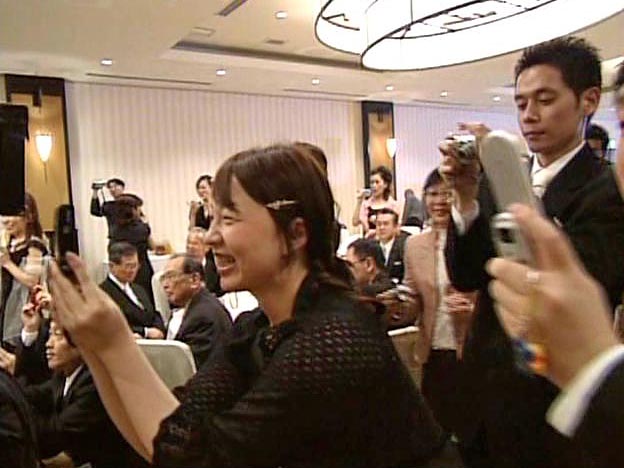 Wedding cake 2
Wedding cake 2
It's picture time for the cake cutting. Everyone moves forward to take the best shot possible.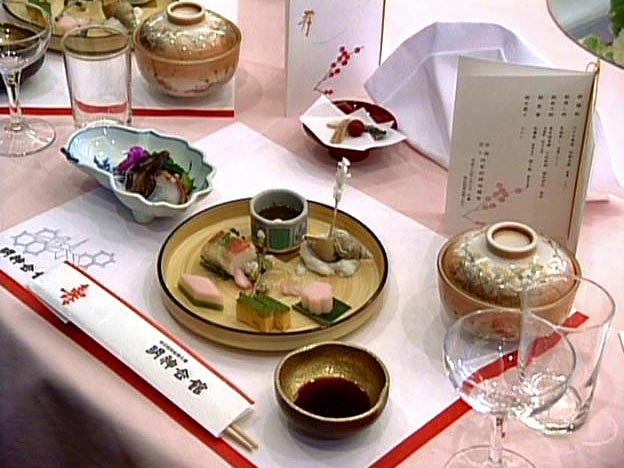 Hiroen reception food
Hiroen reception food
A celebratory meal is served. It can be either Japanese or Western. Iwai-bashi chopsticks for celebrations are often used. Both ends of iwai-bashi chopsticks are tapered, and it is said that this design allows the couple to share a meal with the gods.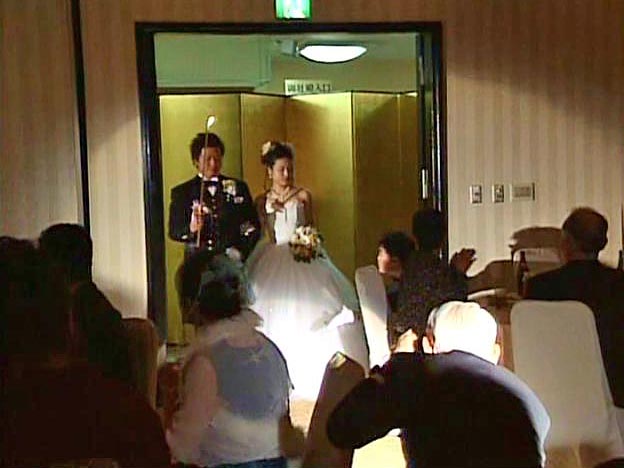 Oiro-naoshi
Oiro-naoshi
Both the bride and groom have changed their outfits. This change of clothes is called oiro-naoshi. The groom changed from his kimono to a tuxedo and the bride changed to a wedding dress.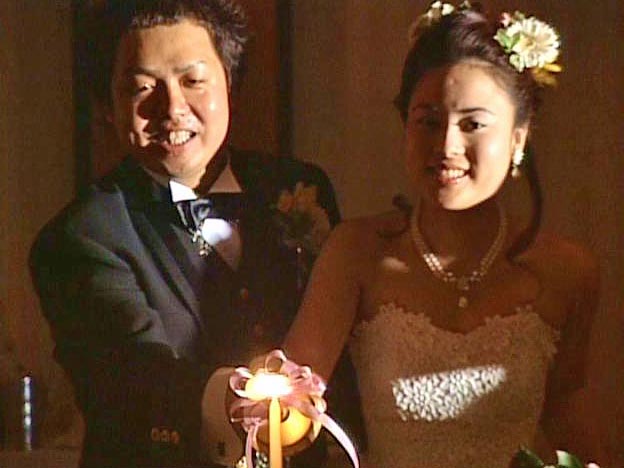 Candle service
Candle service
Then they walk around the reception room, lighting a candle on each of the tables and greeting their guests.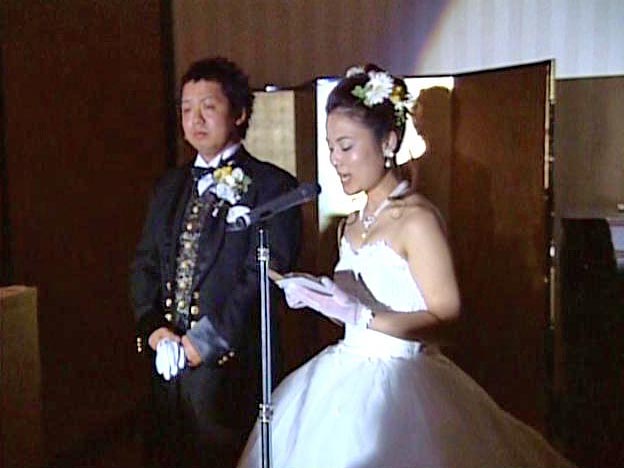 Bride's thank-you letter
Bride's thank-you letter
The bride reads out a thank-you letter to her parents saying, Thank you for having raised me for all those years. Bride's father
Bride's father
It brought tears to eyes of the bride's father.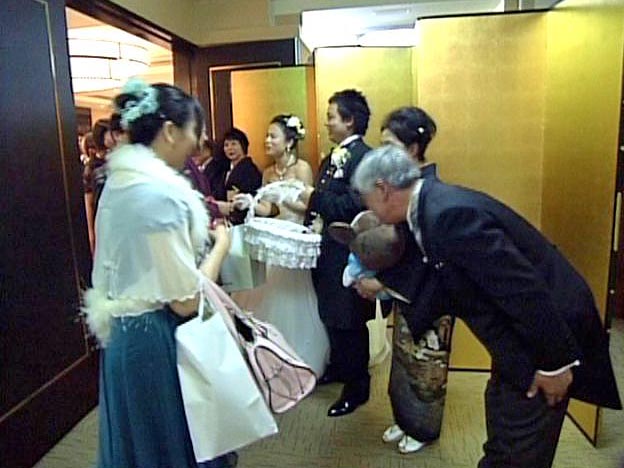 Handing out gifts
Handing out gifts
After the wedding reception, the bride and groom extend their gratitude to the guests at the exit. They hand out a small gift to everyone.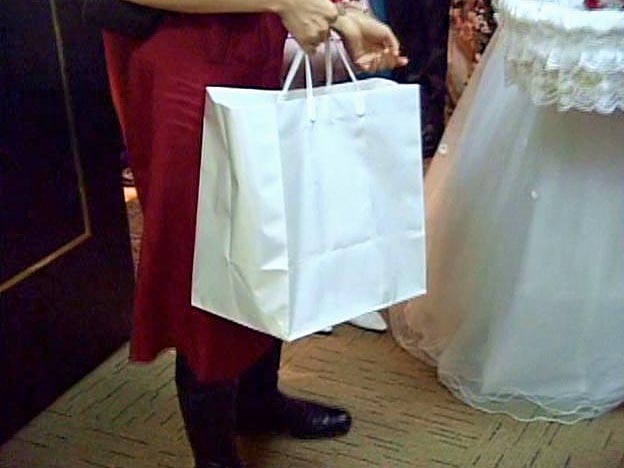 Hikidemono gifts 1
Hikidemono gifts 1
Gifts from the couple are called hikidemono, and they are given to all who attend.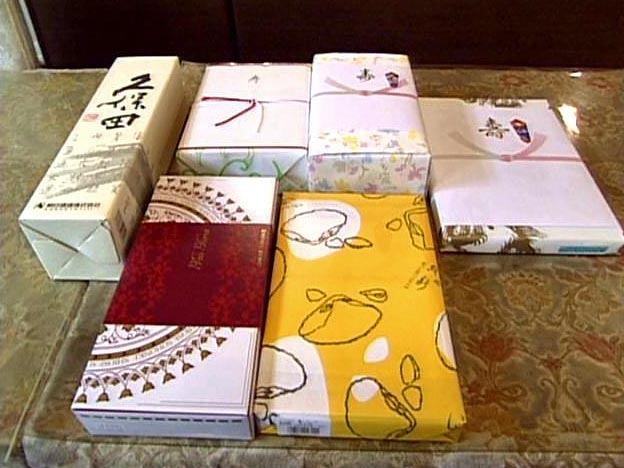 Hikidemono gifts 2
Hikidemono gifts 2
Hikidemono are often sweets, Japanese sake, tableware, and so on. They can be heavy and troublesome to carry home, and in recent years a gift catalogue from which guests can choose gifts and have them delivered to their homes has become popular.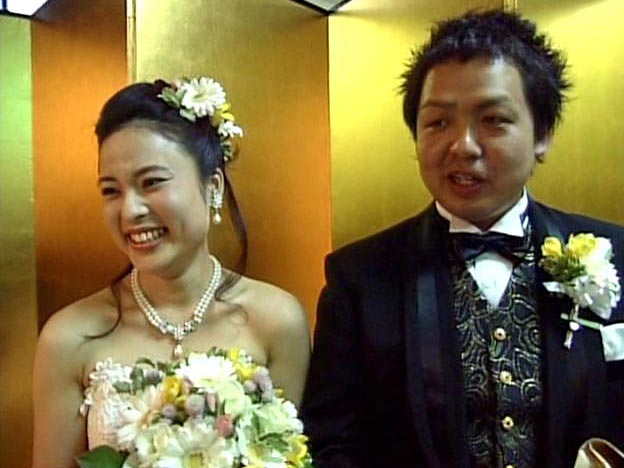 Bride and groom
Bride and groom
The groom says, There were several times when I felt tears starting to well up. But I managed to fight back the tears. The whole event just seemed to pass by so quickly. The bride also seems very happy.

